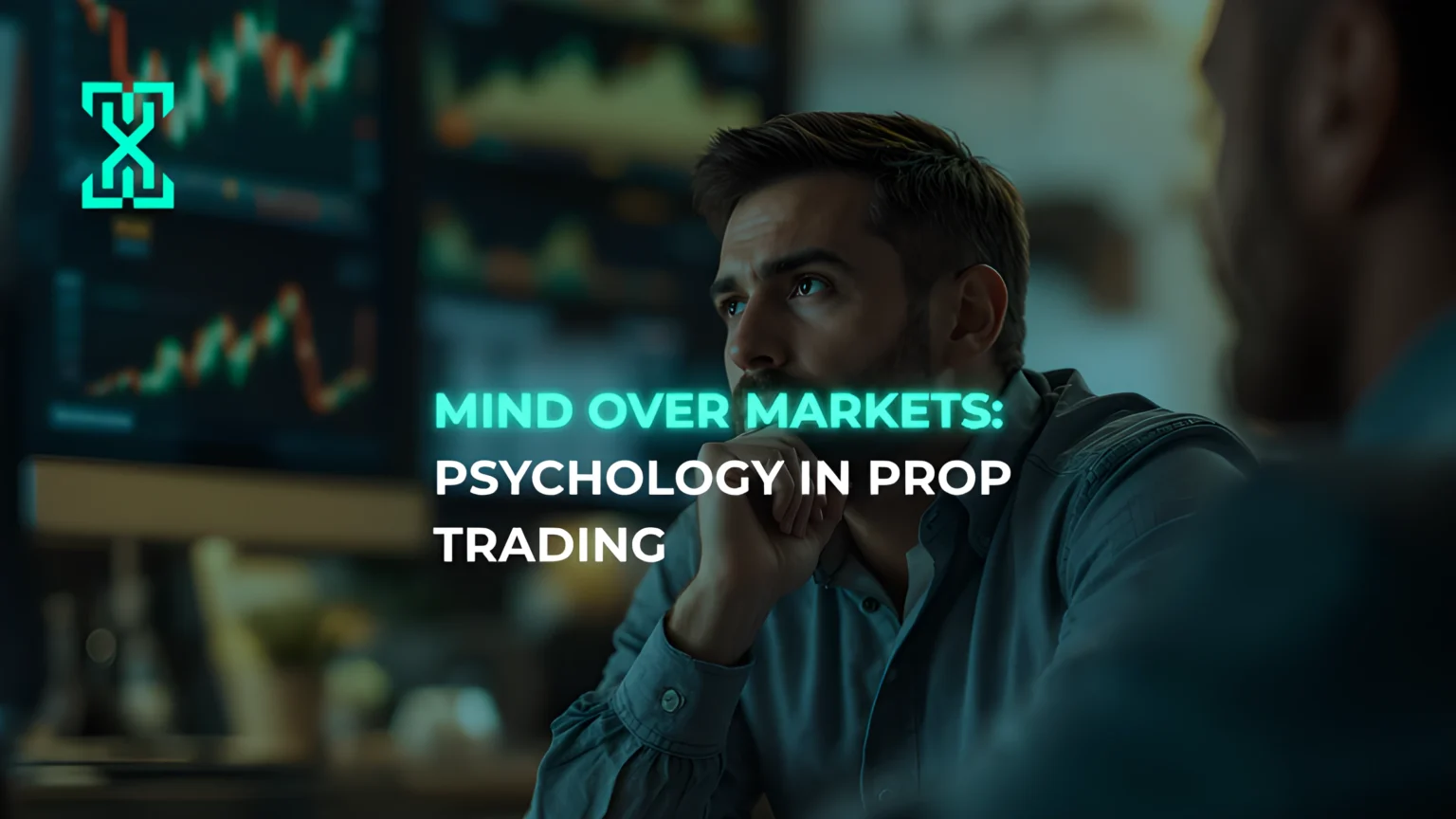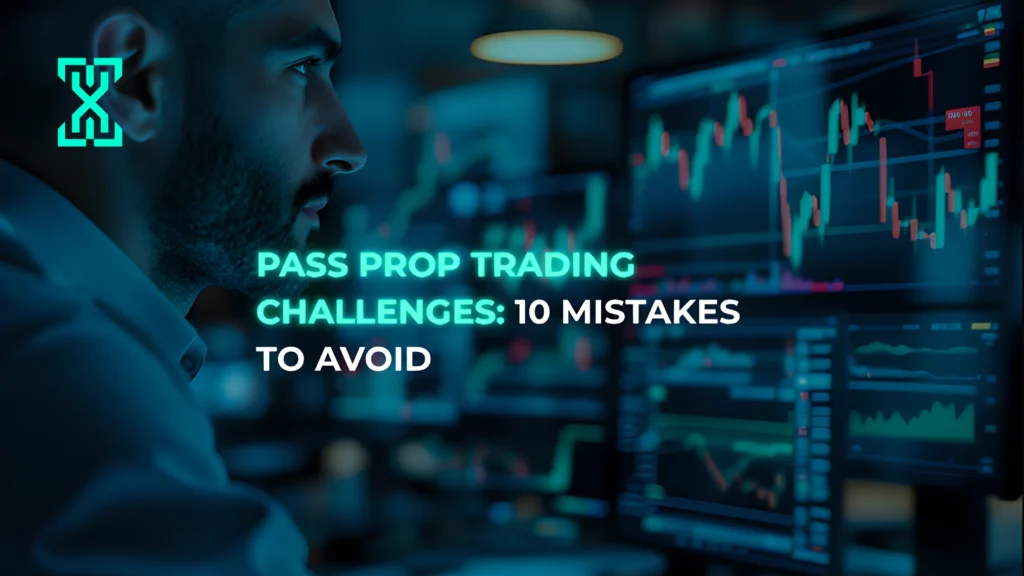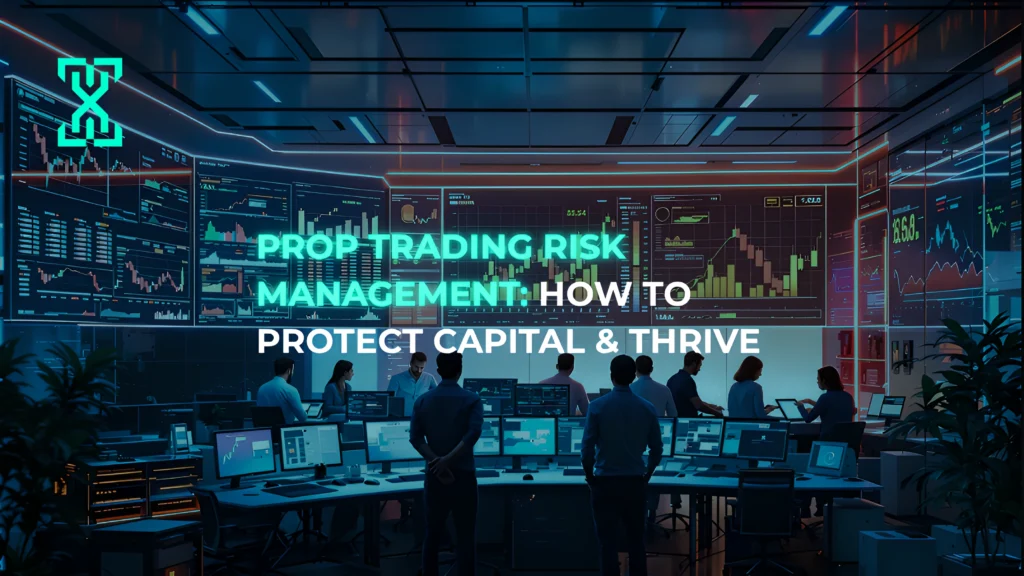Mind Over Markets: Psychology in Prop Trading

Every online trader knows that mastering chart patterns or executing through slick platforms isn’t the full picture. In prop trading, the real frontier is internal. “Psychology in trading” becomes a daily battleground where trading psychology in prop trading can make or break performance. High-pressure deadlines, funded capital on the line, isolation, and expectations can unravel even the best strategies if mental barriers aren’t addressed.
This article walks you through the psychological landscape of prop trading. We’ll define what mental resilience means in this arena, unpack deep-rooted biases like loss aversion and the disposition effect, and explore how isolation and emotional highs can skew decisions. With tools such as mindfulness routines, emotional journaling, and structured mental checklists, you’ll learn to build emotional resilience and a growth-oriented mindset. We’ll also explore why real-time, experience-based learning sharpens your mental game in ways no pre-recorded lesson can, referencing GTF’s immersive sessions. Let’s dive into the psychological edge that separates consistent traders from the rest.
What Is Trading Psychology in Prop Trading?
Trading psychology in prop trading refers to the mindset and emotional state that guides how traders make decisions – especially under the intense pressure of managing external capital. Mental discipline holds equal weight with technical skill in the prop arena. Managing fear, overconfidence, performance anxiety, and the pressure to deliver amplifies the need for emotional control.
On top of that cognitive vulnerabilities, from anchoring to emotional triggers – often distinguish consistently profitable traders from those who falter. Recognizing these internal dynamics is the first step toward mastering the internal game.
Unique insight: Prop trading places external expectations over personal accountability. Learning to separate your self-worth from P&L results builds mental autonomy—and sustains performance when external scrutiny peaks.
Why Psychology Matters More Than Strategy
Strategies and indicators can guide decisions, but psychology decides whether you follow them especially when stakes are high. In prop trading, operating with someone else’s capital heightens performance anxiety
Eleonex emphasizes mindset, confidence, and resilience as core pillars. Without emotional control, traders fall prey to impulsive reactions during drawdowns or market stress.
Unique angle: Think of your trade plan as a blueprint, and your psychology as the construction discipline. Without stable mental control, blueprints fall apart due to impulsive shifts or stress reactions.
Common Psychological Challenges
Prop traders face a unique emotional gauntlet:
Fear, Greed, and Loss Aversion
From prospect theory and large-scale trade analysis, loss aversion shows how people lean toward risk when down but risk-averse when ahead (a dual-headed trap).
Overconfidence & Revenge Trading
Post-win euphoria or pressure after losses can derail strategy. Its important to highlights how overconfidence and emotional trading lead to breakdowns, even when the trading plan is sound.
Burnout & Isolation
Prop trading’s quiet, solitary nature can shift behavior – reducing accountability and amplifying emotional swings under prolonged pressure.
Unique insight: In solitude and stress, impulse doesn’t need a hero-it just needs a trigger. Designing structured breaks and social checkpoints can serve as mental shock absorbers.
Behavioral Biases Impacting Traders
Human behavior skews rationality. Understanding these biases helps reclaim control:
Disposition Effect & Prospect Theory
This is the classic regret-driven bias: prematurely selling winners and holding losers. Kahneman and Tversky’s prospect theory explains this deeply.
Anchoring, Herding, Social Influence
Traders often cling to price benchmarks (anchoring) or follow social cues from peers or influencers. Wikipedia’s social trading section notes how reputational pressure can distort risk behavior.
Unique insight: Every chart trigger is a mental tug-of-war. Training your mind to notice not only what the chart shows, but how you are reacting to it – builds psychological neutrality.
Building Emotional Resilience
To strengthen your psychological foundation, apply these strategies:
Mindfulness, Routine, Self-Care
Eleonex recommends mindfulness, exercise, and relaxation to lower stress during volatile sessions.
Growth Mindset & Journaling
It’s important to emphasize reflecting on failures as learning, not defeat. Keeping a journal of emotional triggers and responses improves self-awareness.
Unique perspective: Think of your mental resilience as “emotional finesse.” It’s not about detaching from emotion, but learning to surf it – keeping rhythm without wiping out.
Structuring a Psychology-Driven Plan
Anchor your emotional control within a plan:
Pre-Trade Mental Checklist
Include emotion check (“Am I stressed or reactive?”), plan confirmation, and risk alignment.
Post-Mortem & Debriefs
After each session or trade, list emotional triggers and reactions. Treat emotions like data points for your improvement.
Unique idea: Build a “Pause Button” in your routine: after a big win or loss, require a physical pause e.g., walk 5 minutes before opening charts again.
Real-Time Training & Psychological Adaptation
Learning in a static environment only takes you so far. GTF’s live market sessions show how real-time exposure refines emotional control – every tick, decision, and silence builds awareness under pressure.
Unique insight: Real-time conditions aren’t just stress, they’re reflections of your mental habits. Treat every minute of live intensity as silent training.
Visual Tools to Anchor Psychological Concepts
- Mind-Emotion Wave Diagram
Show emotional intensity waves over trading sessions, with markers for triggers and responses.
Alt text: “Chart showing emotional highs and lows during prop trading sessions and response points” - Bias Impact Flowchart
Start with “Market Signal → Emotional Reaction → Biased Decision → Outcome.”
Alt text: “Flowchart illustrating how cognitive bias turns signals into poor trade decisions in prop trading psychology” - Mental Fitness Pyramid
Layers: Self-awareness at base, Emotional Resilience mid, Trading Psychology top.
Alt text: “Pyramid showing levels of trading psychology: self-awareness, emotional resilience, and optimized mind”
Quick Takeaways
- Trading psychology in prop trading is the emotional backbone – strategy alone isn’t enough.
- Fear, greed, stress, and isolation often overshadow technical plans.
- Emotional biases like loss aversion, anchoring, and herding distort decisions.
- Cultivate psychological resilience via mindfulness, routines, and journaling.
- Build mental checkpoints: pre-trade and post-mortem emotional reviews.
- Real-time exposures like GTF’s sessions sharpen emotional control.
Conclusion
Success in prop trading hinges not just on charts or capital – but on mastering your own mind. That internal game, psychology in trading shapes every decision under pressure, from risk-taking to handling drawdowns. Traders who win consistently don’t just manage risk, they manage emotion.
By understanding biases like the disposition effect, anchoring, or herd behavior, you reclaim clarity. Building emotional resilience through mindfulness, structured routines, and emotional journaling turns internal chaos into disciplined response. Embedding mental checkpoints, before and after trading – ensures you’re not just following rules but checking your mindset.
Real-time training environments that expose emotional triggers under pressure help ingrain calm response patterns that theory alone cannot produce.
Want to level up your internal game? Start with one mental habit today. A brief mindfulness pause before opening charts or an end-of-session reflection, small steps with big impact.
FAQs
- What is the biggest psychological hurdle in prop trading?
Fear especially fear of losing counterpart capital – often overshadows strategy, creating hesitation or emotional decision-making. - How does journaling improve trading psychology?
Recording emotional triggers and responses increases self-awareness and helps identify patterns that repeat under stress. - What is the disposition effect in prop trading?
Traders tend to prematurely sell winners and hold onto losers due to emotional bias often explained by prospect theory. - Can real-time sessions help my trading mindset?
Yes, live environments like GTF’s sessions condition emotional control under market pressure better than simulated training. - What self-care helps mental stability in trading?
Mindfulness practices, consistent routines, physical activity, sleep, and social connections grounded in trading communities all reinforce mental resilience.
Our Latest Stories
Pass Prop Trading Challenges: 10 Mistakes to Avoid
Passing a prop trading challenge isn’t about flawless strategy; it’s about discipline,…
Trade Less, Earn More: Prop Trading Smarter, Not Harder
Do you feel like you have to trade every day just to…
Prop Trading Risk Management: How to Protect Capital & Thrive
Welcome, online traders! If you’re venturing into prop trading, mastering risk management…
Stay Informed,
Stay Ahead
Bookmark this blog to keep your edge sharp. Whether you're prepping for your first challenge or scaling into a six-figure funded account, our insights are here to help.


